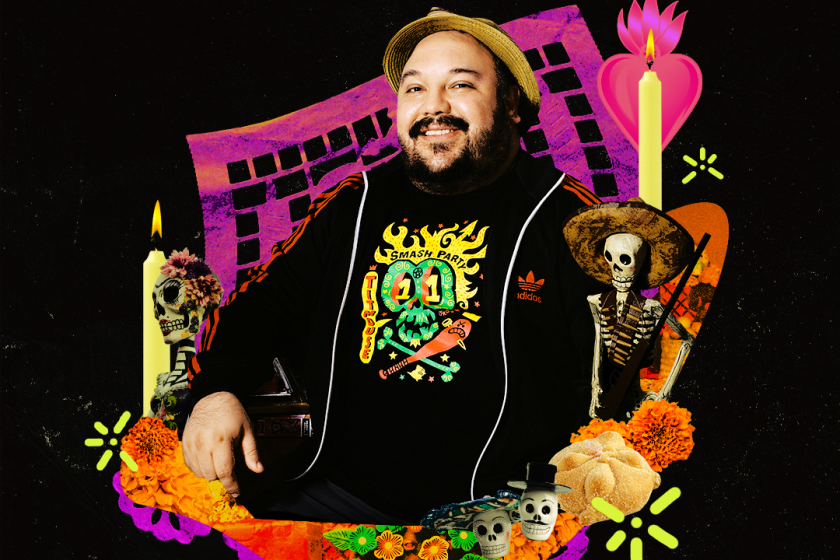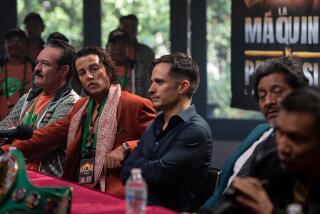
“The Lincoln Lawyer,” one of Netflix’s most popular series, returned Oct. 17 for a nail-biting Season 3. Behind the thrilling storylines is showrunner Dailyn Rodriguez.
Based on Michael Connelly’s bestselling books, “The Lincoln Lawyer,” created by David E. Kelley, follows criminal defense attorney Mickey Haller (Manuel Garcia-Rulfo) as he tackles legal cases — and his personal trials across Los Angeles in his Lincoln Town Car-branded chariot.
This season, Mickey confronts his past as he forges a new relationship with opposing counsel Andrea Freeman (Yaya DaCosta). He also tries to solve the murder of a former client, Glory Days (Fiona Rene), while representing her accused killer.
Writer-director Jorge Gutierrez’s “The Book of Life” portrayed Day of the Dead on the big screen in 2014. The Academy Museum will host a screening Nov. 2.
Known for her work on “Queen of the South,” “George Lopez” and “Ugly Betty,” Rodriguez joined executive producer Ted Humphrey for Season 2, which reeled in 8.3 million viewers in the first half of that season. With Rodriguez on board, the show has continued to cast an authentic light on Los Angeles and its Latino characters, storylines and grubs.
De Los chatted with Rodriguez about Season 3 and the seamless incorporation of Latinos in the show. The following interview has been edited for clarity and length.
Did you ever picture calling the shots as a showrunner?
No, it’s like a dream. I spent so much time not calling the shots and watching other people doing it. But I was excited to take on the reins because I felt like I had gotten to a place where I knew how to do it. I knew the things I didn’t want to do from watching other people.
In an interview with Cole Haddon, you said that you told your agent to put you on the “whitest” show on TV. Tell me more about that.
When I first started in my career, I felt really tokenized. Like, they want a Latino writer on the show because it’s a Latino show, then I’d get hired and I’d be like, ‘I don’t understand this Latino experience.’ I felt very frustrated by it because if we’re writers, we should be allowed to write anything.
So when I fired my agent, I went to a new agent. I said, ‘I think I need a reboot a little bit and I want you to put me on the whitest show on television,’ which was ‘90210.’ I needed that on my resume because I’m just that person who just keeps getting sent out for the same thing. I say this all the time: We can write white stories because that’s all we’ve watched our entire lives.
But then I started seeing white men selling Latino shows; that’s when I called my agent and was like, I’m over it now. I want to go out and develop and write stuff for the Latino people. That would be nice.
I noticed that “The Lincoln Lawyer” seamlessly incorporates aspects of Latinidad and L.A. culture. Does being a showrunner allow you to act more freely with how Latinidad is represented in the show?
A hundred percent. And the way that we get more Latinos on TV is to have more Latino showrunners. When I joined Ted Humphrey (who ran Season 1 on his own), I said to him, ‘Look, L.A. is almost 50% Latino. It’s really important to portray that on the show.’
One of the things that I liked about the first seasons is that it was a pretty ethnically diverse show. I said, ‘I think we can take it a step further and really make L.A. look like L.A.’ It’s not just Latinos that we have, we have a lot of Black, LGBTQ, Middle Eastern, Jewish characters. A lot of the lawyers and judges are over 65.
What was important was to show the variety of Latinidad. We have Latino characters, especially in Season 2, that are Latino but don’t speak Spanish, or we have Latino characters that speak with an accent, one that doesn’t, we have an FBI agent, we have a chef, we have a tailor, we have a gardener, we have a lawyer, we have a cop, we have all of it, a bird’s-eye view of all the things we can be. And that is super important to me.
In Season 3, there’s a scene between the new driver Eddie Rojas (Allyn Moriyon), Frank ‘Val’ Valenzuela (Lombardo Boyar), the bail bondsman, and Mickey Haller (Manuel Garcia-Rulfo). It was like this moment where all three of them are so different. I was so thrilled to watch that.
Have you faced any challenges as you continue to increase Latino characters in each season?
In Season 3, there’s a character named Oscar Guerrero (Cuete Yeska), who is a gang guy with face tattoos. It’s a home invasion case. There was concern that we had this kind of Latino on the show and my feeling was we have all these other Latinos. We can’t ignore that those people exist. That’s also disingenuous. I think that because we’ve done such a good job portraying Latinos that it’s OK for us to have maybe a slightly more negative portrayal in the midst of all of that.
We have a lot of open casting. The best actor sort of gets the part. And when that happens, it’s amazing how diverse your show starts becoming.
I feel like a lot of Latino-casted shows get cut after one or two seasons, but this show has remained strong throughout. Did you ever imagine it being such a strong show?
I did, because people show up for the story. The stories are compelling. Manuel [Garcia-Rulfo] is so charismatic and so wonderful onscreen. I think it starts with him. Once you love him, you don’t think about the fact that sometimes he speaks Spanish.
What we hear a lot from fans and press and reporters is how authentically L.A. the show feels. We’re showing a different kind of L.A. than you usually see. It’s almost always set in Beverly Hills or on the beach. We shoot a lot of our show in Highland Park, Baldwin Hills.
You told Tudum that Season 1 Mickey was broken, in Season 2 he was Icarus. Who is Mickey in Season 3?
Season 3, Mickey is reckoning with his past a little bit. He’s wondering if the way that he practices law may have resulted in the death of Gloria Dayton. It’s him sort of examining himself, but then ultimately what he realizes is that it goes beyond him. Sometimes it’s really about the system.
I saw that you made an IG post that there were four Latinas on set (including yourself) who were calling the shots during filming: writer Isabella Rodriguez, director Paula Garces and director of photography Moira Morel. What episode was that?
That was the most special moment of the season. It was just really amazing to sit there and realize that there were four Latinas in charge and two other women running the set. It was Episode 7, which is also special because that’s Lorna Crane’s (Becki Newton) first official day as an attorney. So the entire thing felt very much like a woman power piece.
What would you tell a budding creative who is eager to break into the industry?
If they’re a writer, I would say keep writing. If one thing doesn’t work, try a different genre. Try something different. Don’t limit yourself if you are a writer and it doesn’t seem to be working out. If you still want to be creative and have a voice in this industry, maybe there’s a different kind of job that will allow you to do that.
We’re in a bit of a contraction of the business. I tend to be quite a pessimist. But I’ve heard the demise of this business so many times and it doesn’t materialize. So I just think we’re in a weird contraction. So I keep telling people, buckle down, get through it.
More to Read
The Latinx experience chronicled
Get the Latinx Files newsletter for stories that capture the multitudes within our communities.
You may occasionally receive promotional content from the Los Angeles Times.








